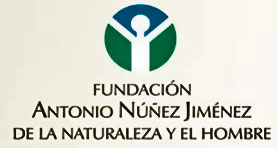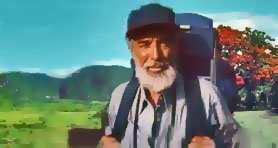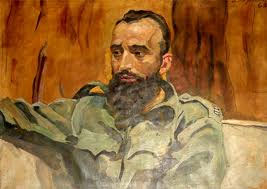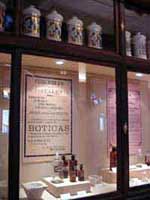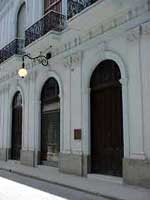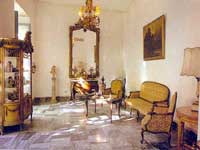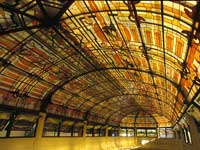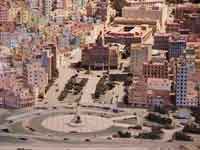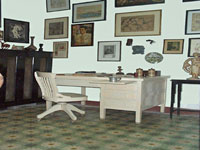|
|
|||||||||||||||
|
On iPads and tablets, use the Puffin browser to enjoy all our features - such as the above menu. AppStore link >AppStore <
 |
|||||||||||||||
|
|
|||||||||||||||
![Ernest Hemingway's cats in his Finca Vigia © Robin Thom Flickr.com •]• Museo Artes Decorativas, Vedado © sogestour](http://www.particuba.net/villes/la_habana/lahabana_museos/images/GatosHemingway720Thom.jpg) |
|||||||||||||||
|
|||||||||||||||
Cuba boasts more than 300 museums : 14 art museums, 78 history museums, 5 museums of anthropology and ethnology, 7 museums of science and technology, 9 specialized museums, 184 general museums, 9 history museums and sciences and four archaeological museums. Of the 80 museums suggested here, half are located in Habana Vieja. |
|||||||||||||||
 Located in the embassy area of Miramar/Playa, at the corner of Quinta Avenida (5th Avenue) and calle 14, the Memorial de la Denuncia features three buildings and six thematic halls equipped with the latest technologies such as touch screens, holograms, video clips, ambient sounds and even smells of explosive powder. The themes developed : CIA, State Terrorism, Economic War, Media War, Immigration Manipulation and Our strength is the strength of the people. |
|||||||||||||||
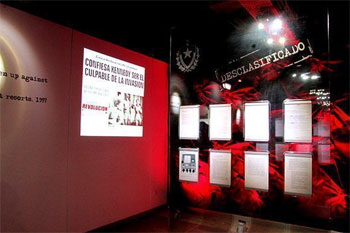 "Kennedy admits to being guilty of the invasion of the Bay of Pigs in April 1961." - Room dedicated to declassified documents © cuba debate, cynthia garcia casañas |
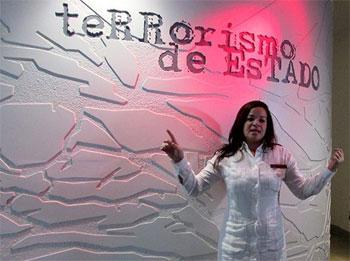 The Memorial de la Denuncia is open Tuesdays to Saturdays from 9h30 to 17h. Quinta (5ta) avenida, corner (esquina) 14 © cuba debate, cynthia garcia casañas |
||||||||||||||
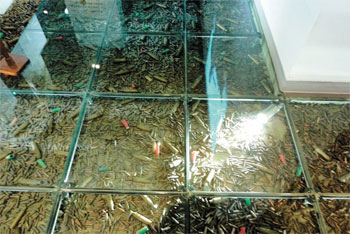 "In one of these halls, we walk on a glass floor under which we can see hundreds of different calibre bullets and other munitions of war. It's pretty impressive. " © jacques lanctôt, journal de montréal 070418 |
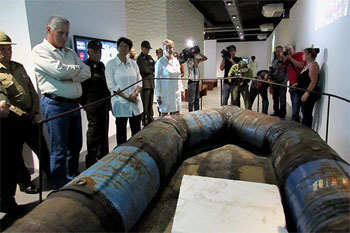 Boat recovered from an attempt of illicit entry dating from ... 2017. The Memorial was inaugurated in August 2017 by Miguel Díaz-Canel Bermúdez (in white shirt on the left), designated successor of Raul Castro © cuba debate, cynthia garcia casañas |
||||||||||||||
|
According to contributor Eleanor R (quoted below), these museum sites are at the top of the 15 she recommends in town - on tripad visor. More here.
|
|||||||||||||||
|
NATURE AND MAN FUNDACION NATURALEZA Y EL HOMBRE Avenida 5B No 6611 e/calle 66 y calle 70 dans Playa/Miramar Mon-Fri 9h-16h Entrance : 3cuc Tél. (7) 209-2885 or 204-0438 Public transport : Omnibus P1, P4 or P10 In this museum dedicated to "Man in Nature", here lies the work of Antonio Nuñez Jimenez (1923-1998), explorer of Cuba and the world (Andes, China, Galapagos, Easter Island), who was a naturalist before the liberation of Cuba. At 17, he founded the Sociedad Espeleológica Cuba. He obtained two doctorates in La Habana, in Philosophy and Letters in 1951. Three years later, the dictator Batista had all the editions of his first book "Geografia of Cuba" removed because Jimenez described too clearly the miseries of the human landscape... Nuñez Jimenez fought alongside the Che and Fidel and was appointed the first director of the institute which undertook the foremost action of the Revolucion : land reform. Then he succeeded Guevara as President of the National Bank of Cuba and was the founding president of the national Science Academy — Academia de Ciencias. He followed this with posts as Vice-Minister of Culture and Chairman of National Monuments. Recognized around the world, he was a member of the American National Speleological Society and the National Geographic Society. In 1987, he went on an extraordinary journey of 17,422 km on the Amazon by canoe, from the source of the river to the sea on the coast of Brazil. Through his exploration of the many caves that dot the underworld of Cuba, this extraordinary man was considered at the end of his life as "the fourth discoverer of Cuba" after Cristóbal Colón, Alejandro de Humboldt and Fernando Ortiz, no less. The museum exhibits artifacts, personal items, his literary works (190 books and hundreds of articles and conferences) and his photos, one of the largest collections in the country. Website here. |
|
||||||||||||||
Centro de Relaciones Cuba-Europa Palacio del Segundo Cabo Plaza de Armas, Habana Vieja Audiovisual materials, panels with infographics, technical searching tools, to enlarge the visual information, tactile apps and virtual routes for the epoch of the history, the Mayor of Barcelona and the Oficina del Historiador of the Ciudad of La Habana. The most modern museum in Cuba, inaugurated in May 2017. |
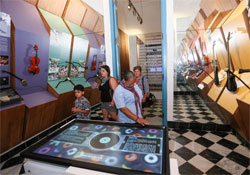 |
||||||||||||||
MUSEO EL RELOJ Corner Muralla (37) and Oficios, Habana Vieja The facade is a replica of the famous Cuervo y Sobrinos watches, originally established in 1882 at this address and at the time considered "one of the proudest of the mercantile city." The first watchmaker of the city was Gustavo Jensen y Cia. Mercaderes No. 11, at 13 and 15, there were also Bonnet y Cia and 17, Santa María Bermúdez y Cia. It is also a shop. |
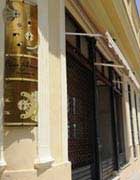 |
||||||||||||||
CENTRO CULTURAL DULCE MARIA LOYNAZ Calle 19, No. 502, esquina (corner) E, Vedado. Tél. (7) Since February 5, 2005, the place is dedicated to the great writer and poet of Cuba (1902-1997) in her house - the meeting point of the intelligentsia with whom Dulce Maria devoted her time to litterature and ideas from here and elsewhere. This is where she founded and ran the Cuban Academy of Language. The lady was even celebrated by Spain, which is saying something when you know she was the fourth child (after Flor, Enrique and Carlos Manuel) of the General of the Liberation army, Enrique Loynaz del Castillo, a hero of Cuba who fought for the country's freedom from Spanish rule. |
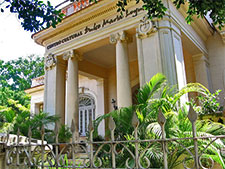 |
||||||||||||||
CASA MUSEO JUAN GUALBERTO GOMEZ Calle Empedrado 359, entre Habana y Compostela, in Habana Vieja Tél. (7) 866-4114 It was under the tutelage of Juan Gualberto Gomez that were published in 1879 newspapers (periodicos) The Fraternity and The Igualdad. Both publications were founded by supporters of racial integration of blacks (negros as Cubans say, African-Americans in the U.S.) in Cuban society and the total independence of Cuba from Spain. |
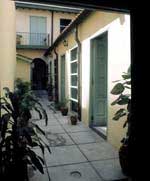 |
||||||||||||||
CASA MUSEO COMPAY SEGUNDO Calle 22 entre Primera y Tercera, Miramar. Tél. (7) 206 8629 or 202 5922 On November 18, 2007, on the steps of Padre Pico de Santiago de Cuba, hundreds of fans celebrated the 100th anniversary of his birth. Compay Segundo (born in Playita Siboney, Santiago, 1907; died La Habana, 2003) gained international fame at the age of 80 through his participation in the musical project Buena Vista Social Club. His Chan Chan quickly became an anthem to the Cuban essence. At the opening in October of 2006, his son Salvador Repilado, the current director of Grupo Compay Segundo hoped that the place would be more than a museum: a rendez-vous of trovadores from the country and abroad. |
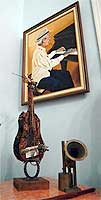 Videos of the artist Here. |
||||||||||||||
CINEMATOGRAFO LUMIÈRE Calle Mercaderes 14, e/ Obispo y Obra Pía, in Habana Vieja Created to honour the seventh Art, that of Auguste and Louis Lumière, creators of cinema. Just one year after its first demonstration in Paris on February 7, 1897 in a small room of the Teatro Federico García Lorca took place the first Cuban use of the projector and a few days later, the projection of the first Cuban film "Simulacro of incendio ", with a duration of 60 seconds. Projections of shorts on Havana from 10-12h and 14h to 16h, Sunday program for children. Last Monday of the month, "El Cine Cubano of Nostalgia." |
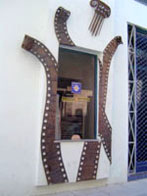 |
||||||||||||||
|
MUSEO SERVANDO CABRERA MORENO Avenida Paseo, corner of 13 in Vedado. One of the newest museums in the capital, opened in 2006, it occupies a palatial mansion and uses the most modern museum techniques. It presents works of this great local artist (1923-1981) including a collection of his paintings and drawings and intimate spaces of his residence with family photos, antique furniture and porcelain, travel souvenirs, all presented in a highly Habanera atmosphere. Garden sculptures, library, archives of the artist. The premises are divided as follows: Dibujos, Servando in Tres Tiempos; Presagios; Erótico Arte (1974-1979) y Arte Erótico 1981 |
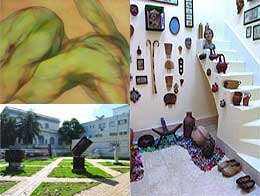 |
||||||||||||||
MUSEO NACIONAL DEL DEPORTE Ave. Independencia esq. A 19 de Mayo, Sala Ramón Fonts, Plaza de la Revolución, Vedado Tel (7) 861-4696 Opened in 1991 to coincide with the holding of the Pan American Games in Cuba, its permanent collection includes medals, trophies, photos and uniforms of some of the most able men and women of Cuban sport. There is also a rifle which belonged to the Che dating from 1967; the chess clock and chair of the great Capablanca; masks of fencer Ramon Fonst (1883-1959); gloves of boxer Kid Chocolate; trophy and sweater of Olympian Javier Sotomayor and gloves of the boxer Felix Savon, among others.Presentations of themed exhibitions, such as "Women in Sport" or "Olympics". |
|||||||||||||||
|
Casa Museo Oswaldo Guayasamin Calle Obra Pía # 111 entre Oficios y Mercaderes, La Habana Vieja Tél. (7) 861-8166 On Ecuadorian origin, modern contemporary painter born in Quito in 1919 and died 80 years later resides in the memory of these great works now displayed in a casa 18th century built by Peñalver family. The artist is recognized in virtually all modern art museums in the Americas. His paintings were exhibited over 180 times solo, the Hermitage to Barcelona via Roma and Warzawa. Among his close friends Fidel and Raúl Castro, Francois and Danielle Mitterrand, Gabriel García Márquez and Rigoberta Menchú. |
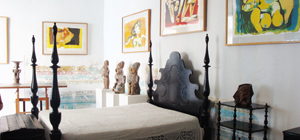 Guayasamin « Manos de Fidel » |
||||||||||||||
|
Casa Museo Simon Bolivar Calle Mercaderes # 156 entre Obra Pía y Lamparilla, La Habana Vieja Tel. (7) 861-3988 Historical artifacts, iconography, extensive collection of fine art Venezuela rooms devoted to crafts and archeology, this house-museum dedicated to the Libertador (Bolivia, Peru, Colombia) is also a tribute to his homeland. Tuesday to Saturday, 9am-17h |
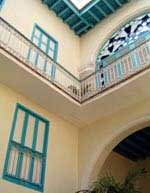 |
||||||||||||||
|
Museo Armeria 9 de Abril Calle Mercaderes # 157, entre Obrapía y Lamparilla, La Habana Vieja (7) 861-8080 Museum dedicated to firearms in the 19th and 20th centuries, knives, personal collection of Fidel Castro and some weapons of the heroes de la Revolucion, the Che Guevara's M2, the Beretta of Celia Sánchez Manduley and a Springfield modified for members of the Ejército Rebelde, with the inscription "26 de julio. Made in Sierra Maestra. " Tuesday to Saturday, from 9-17h, 13h-17h Monday |
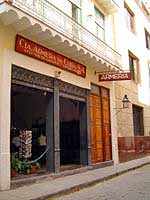 |
||||||||||||||
|
Aqvarivm Calle Teniente Rey # 9 entre Oficios y Mercaderes, La Habana Vieja Tel. (7) 863 9493 acuavieja@cultural.ohch.cu Modest museum site and educational mainly for poor children or maladaptive of the old town. Project Historian of the City, it is the Aqvarivm (that's how you write it) seven major aquariums and relaxation activities for young and old. Example to follow in our noisy and impersonal cities. |
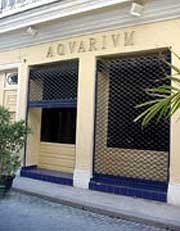 |
||||||||||||||
|
Museo del Chocolate Calle Amargura, angle Mercaderes, La Habana Vieja Tel. (7) 866-4431 Opened in November 2003 in collaboration with the Museum of Cocoa and Chocolate in Brussels, he stayed in the Casa de la Cruz Verde. Its exhibits include various objects, illustrations, porcelain, pictures and manuscripts relating to the world of chocolate. Visitors can participate in the process of manufacture or sit at tables to enjoy a sublime hot chocolate. Sales counter piece. |
 |
||||||||||||||
|
Museo de la Farmacia Habanera Calle Teniente Rey 41, e/ Habana y Compostela Habana Vieja (7) 866-7556 In this building was erected in 1853 Reunion pharmacy offering at the time, both allopathic and homeopathic medicines. After the restoration of the Johnson Pharmacy, then Taquechel (see below), this museum is the product of decades of research and restoration products, labels, prescriptions, jars, amphorae and original containers now exposed. An unprecedented work that was the pride of the famous City Historian Eusebio Leal during his inauguration on 30 July 2004. |
|
||||||||||||||
|
Museo de Arte Colonial Calle San Ignacio No. 61, entre Empedrado y O'Reilly, Plaza de la Catedral, La Habana Vieja Tél. (7) 862-6440 Specialist : Lic. Margarita Suárez García colonial @cultural.ohch.cu In a building built in 1720, the first of this plaza in the baronial style of the 18th century period rooms and rooms that are exhibited significant examples of the decoration and furniture of the great colonial mansions of Havana the 18th and 19th centuries. |
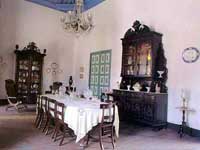 |
||||||||||||||
|
Museo Nacional del Aire Avenida 212, entre 29 y 31, La Coronela, dans Cubanacan, quartier excentré situé au-delà de Playa/Miramar. Testimonials confrontation Cubans to nature and to the enemy, its some 1,700 pieces, including photos, documents and objects make the museum a unique place in Cuba. This privileged location tells the history of aviation and anti-aircraft defense. The facility covers 15,000 square meters and informs visitors about 52 exhibits of equipment, including planes, helicopters and artillery related to various stages of liberation wars the largest island of the Antilles. |
|
||||||||||||||
|
Museo de la Danza Calle Línea 25, esq. G, Vedado Tél (7) 831-2198 Established by the Council of Cultural Heritage, place shares its activities with the Documentation Centre of Odilio Music Urfé. Its rooms abound objects and documents related to the art of dance from the 17th century until today, from, in large part, the vast private collection of prima ballerina Alicia Alonso, CEO national Ballet of Cuba. Rooms Alicia Alonso, Cuban National Ballet, Romantic, Russian ballet, modern dance, Spanish dance and visual arts room connected to dance. |
|
||||||||||||||
|
Capitolio de la Habana Calle Prado y San José, La Habana Centro. Majestic and simple, built in the heart of Havana, the National Capitol is considered one of the largest public buildings of its kind in America. It was inaugurated on 20 May 1929 and covers more than 43,600 meters of surface, its highest dome 91 meters. Directly under the top, a reproduction of a 24 carat diamond mounted in a gold ring on a black onyx base octagonal marks kilometer zero of the road that crosses the island. |
|
||||||||||||||
|
Museo de Ciencias Naturales Felipe Poey Universitad de La Habana, Plaza Ignacio Agramonte, Édifice Felipe Poey. The historical and scientific value of the museum is enhanced because it is the first of its kind established in Cuba. The originality of his collections and the exclusive presence of copies, collected mostly by a gathering of world-class scientists. |
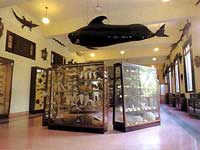 |
||||||||||||||
|
Museo de la Ciudad Calle Tacón No. 1 entre Obispo y O' Reilly La Habana Vieja. Tél. 861 2876, 863-9862 Located in what was the building of the General Captains of the island at the time of the colony, it has collections that form the historical panorama of La Habana since its foundation with 40 permanent exhibition halls. The largest rooms are dedicated to the Cuban wars for national independence. Weapons, ethnology, archeology and folklore elements. Monday-Sunday, 9:30 a.m. to 6:30 p.m.. 3cuc |
 |
||||||||||||||
|
Museo de la Perfumería Calle Oficios, e/ Obispo y Obrapía, La Habana Vieja Among its collections, it exhibits a varied sampling beginning with perfume bottles found during archaeological excavations of the 19th century to the various lines of perfumes and toiletries of the early 20th century to today. Tuesday to Saturday, 14:30 to 21:45. |
|
||||||||||||||
|
Museo de la Revolución Calle Refugio No. 1 entre Monserrate y Zulueta, La Habana Vieja. Tél. 862-4091 or 862-2463 Located in the former Presidential Palace, he exhibited a sample of objects of great historical significance of the revolutionary war and titles of national liberation. In its outdoor spaces, we find the Granma boat used by Fidel Castro and 80 fighters, when they return to Cuba after their exile in Mexico. Tuesday 10am to 18pm. |
|
||||||||||||||
|
Museo Ernest Hemingway Calle Vigía y Steinhart, Finca Vigía, San Francisco de Paula. Tél. 891-0809 The house where lived from 1939 to 1961, the famous novelist. Personal belongings of the author, books, documents and photographs are kept as he left them. Everything has been preserved where Hemingway had placed and are jealously preserved as an important part of the world and Cuban heritage. A restoration project by of U.S. institutions (kitchen, etc.) and extensive research (thousands of unlisted letters) is blocked (Spring 2006) by the U.S. government due to political childish fury . (The author had long been harassed by the FBI: they do not come out alive, preferring to fuck a discharge in the palace.) |
 © sogestour Photos by the talented Robin Thom here. |
||||||||||||||
|
Casa de Africa Obrapía #157 entre Mercaderes y San Ignacio, La Habana Vieja. Tél. 861-5798 Specialist : Lic. Alberto Granado Duque africa@cultural.ohch.cu Home in Africa has its main funds afrocubaine an important collection donated by Fernando Ortiz and the African historical collection of Cuban President Fidel Castro. It also exhibits original valuable pieces of slave trading days on the island. The center conducts research on ethnic cultural topics of countries that are represented through their collections and especially their remarkable influences on Cuban culture. There is also a library specializing in the religions of sub-Saharan Africa. Tuesday to Saturday, 10:15 to 5:45 p.m.; Sunday, 9:15 to 12:45. 2CUC |
|
||||||||||||||
|
Museo de Ciencias Naturales Carlos J. Finlay Calle Cuba No. 460 entre Amargura y Teniente Rey, La Habana Vieja. Tél. 863 4824 museofin @infomed.sld.cu Unique in Latin America, its rooms tell the history of science in Cuba, the history of the Royal Academy of Sciences of Havana and the involvement of medical professionals in the wars of independence. Monday to Friday, 8am to 17h. |
 |
||||||||||||||
|
Museo Nacional de Artes Decorativas Calle 17 No. 502 entre D y E, Vedado Tel. (7) 832-0924 Has permanent collections and temporary a varied sampling of European and Oriental decorative arts, such as ceramic, porcelain, furniture, paintings and sculptures from the 16th to the 20th century. Wednesday to Sunday, 9am to 16:45. 2CUC |
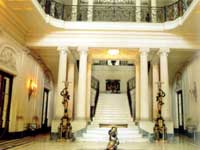 |
||||||||||||||
|
Museo Nacional de Historia Natural Calle Obispo No. 61, Plaza de Armas, La Habana Vieja Tel. (7) 863-9361 It is the largest institution of its kind in the country wealth and the expansion of its collections. Its rooms are dedicated to the flora and fauna Cuba and other parts of the world; valuable archaeological samples, mammals, fossils and minerals. It also maintains a joint exhibition with the American Museum of Natural History in New York. Monday to Saturday, 9am to 4:45 p.m. |
 |
||||||||||||||
|
Museo Nacional de la Música Calle Capdevila (Carcel) No. 1 entre Aguilar y Habana, La Habana Vieja Tél. 861-9846 In a building inspired by the Italian Renaissance built by the Pons family in 1905 and restored in 1981, is devoted to the evolution of Cuban music and its instruments from the 17th century to the present day with folk instruments (16th to 20th century), the orginial partitions Cuban major works and restored instruments. Tuesday to Saturday, 9am to 17h. |
 |
||||||||||||||
|
Museo Nacional de Bellas Artes Calle Trocadero e/ Zulueta y Monserrate, La Habana Vieja. Tél. (7) 862-0140 musna@cubarte.cult.cu PHas the largest collection of Cuban art; rooms devoted to Cuban art: paintings and prints from the 16th to the 20th century; European art room with original works of Rubens, Murillo, Goya and other great painters; ancient art of Egyptian, Greek and Roman. Thursday to Monday, 10am to 17h. 5CUC |
|||||||||||||||
|
Museo Napoleónico Calle San Miguel No. 1159, angle Ronda, Vedado, behind the Universidad. Tél. 879-1412 Known as one of the five largest in the world and a rare museum of its type specializing in Art Empire-style Art, the Napoleonic Museum was created December 1, 1961 by infamnous Sugar Baron Julio Lobo in his stately home built between 1926 and 1929, imitation of a palace Florentine Renaissance of the sixteenth century. This museum hoards 7400 works of art including objects from the Napoleonic era and others having belonged to the Emperor of the French or were related to his life. One of the most interesting pieces is the death mask of Napoleon Bonaparte, brought to Cuba by its author, Dr. Francesco Antommarchi physician bedside Napoleon until his death. Tuesday to Saturday, 10am to 18:30. |
 |
||||||||||||||
|
Museo Numismático Calle Obispo No. 305 e/ Aguiar y Habana, La Habana Vieja Tél. (7) 861 5811 numismatica@cultural.ohch.cu Moved (was on Oficios) in July 2004 in the former building of the Banco Mendoza, this extensive collection offers various phases of the Cuban numismatic history since the 16th century and others dating from the seventh — with some 162 000 items including 20 gold of great historical value. It also shows medals, decorations and chips served salary in sugar. Collection of false "Bonds of The Revolucion" from the 1860s and 1950s. Other collections including banknotes and coins from different parts of the world, some of which include tickets signed by Manuel de Céspedes in 1869. Sale of recent pieces. Tuesday to Saturday, 9:15 to 4:45 p.m. |
Contact : Lic. Fernando Gonzalez Garcia, Presidente Asociacion Numismaticos de Cuba Gaveta Postal 230 10100, Habana 1, Cuba Telephone: (7) 863-6940 or 861-5857 |
||||||||||||||
|
Museo de la Alfabetización Ciudad Libertad, calle 29 E, entre 82 y 102, Marianao. Tél. 260 8054 In this museum - a former military dictatorship home - are all symbols of the great business literacy campaign in the 60s: the notebook and teacher's manual, the lamp and flag free territory of illiteracy. In the first of these rooms there are attributes and a large photograph of the Commander in Chief during his visit to the UN in September 1960, when he announced: "Cuba is the first country in America, in few months can not rely say no illiterate. " Monday to Friday, 8am to 17h. |
|
||||||||||||||
|
Museo Casa Natal de José Martí Leonor Pérez # 314/ Ejido y Picota La Habana Vieja Tél. 861-3778, 861-5095 Specialist : Lic. Zenaida Gómez Taño The building, built in Havana colonial style in the 18th century harbors the most comprehensive group of objects that belonged to the "great apostle of Cuba" and welcomes more than 70,000 visitors. Inside the oldest museum in the country (1925), one can admire, among other artifacts, the lullaby that brought Marti up to the age of four and a reproduction of his desk at the University of Zaragoza (Spain) from 1871 to 1874. Tuesday to Saturday, 9:15 to 5:45 p.m.; Sunday, 9:15 to 12:45. 1cuc |
|
||||||||||||||
|
Memorial José Martí Paseo y Carlos Manuel de Céspedes Plaza de la Revolución (7) 838-2347 In the base of the monument erected in the geographic center of the city, is located venue with life and work of the man who fought for his country and for America. Formed by a five-pointed star, the place has showrooms in which it is shown, among other documents, facsimiles and original manuscripts as the first letter written by Martí his mother, nine years until the note sent May 19, 1895, just hours before his fall in battle. Highlights of Cuban revolutionary process are graphically taken, including pictures of the historic gathering of people in the Plaza of the Revolution, 2 September 1960 came to support the First Declaration of Havana. Every day from 9h to 17h. 8cuc |
|
||||||||||||||
|
Museo Postal Cubano Ave. Rancho Boyeros, Plaza de la Revolución, Ministerio de Comunicaciones. Tél. 870 5193 or Ave. Independencia e/19 de Mayo y Ayestarán. Municipio Cerro. Tel: 863-3023 A museum specializing in the history of the post and philately. Y are exhibited ancient forms of writing and valuable documents that tell the history of the Cuban position. Note, the "Book of Accounts" the first director of the Cuban mail in 1765. Another exhibit of great interest, the first stamp in the world, "Penny Black", which was circulated for the first time May 6, 1840 in England. One of the most excellent samples that this museum has is the postal rocket, which was originally an issue of postage stamp. There is also a vast universal collection and a room dedicated to Cuban stamps. Monday to Friday, 9h to 16h. |
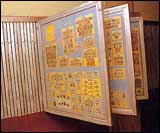 |
||||||||||||||
|
Maqueta del Centro Historico Calle Mercaderes No. 114, entre Obispo y Obrapía, La Habana Vieja . Only exceeded by his cousin unienne states, the panorama of New York, the model of La Habana is, by its size, the second largest in the world. The designers have spent 12 years to build it! It will be appreciated, as former U.S. President Jimmy Carter visited May 12, 2002, the topography of the 727 square kilometers of the city and the overall volume of its different areas. Tuesday to Saturday, 9:30 to 5:30 p.m.. 3cuc |
|
||||||||||||||
|
Museo del Ron San Pedro (Avenida del Puerto) #262 e/ Santa Clara y Sol, La Habana Vieja Tél. 861-8051 ou 860-3195 fundacionhc @ip.etecsa.cu Located in the building of the foundation of the Havana Club distillery, a house built in the 18th century, at the time known as the Casa de la Montera Count. Today, through guides specializing in German and Italian, Spanish, English, French, visitors follow all stages of development of the real Cuban rum, since the raw material in the form of sugar cane to the palace, materialized during the tasting rum Havana Club proposed in his bar, the rhythm of our traditional music. Tuesday to Saturday, 9:30 to 5:30 p.m.. 5CUC |
|
||||||||||||||
|
Museo del Automovil Calle Oficios #13, entre Obra Pia y Justiz La Habana Vieja Tél. 863-9942 U.S. cars alongside old carriages dating from the late 18th; collection of tractors and steam engines. Thirty vehicles in all. Among the "treasures", a Cadillac V16 1930 Ford T 1918, a rare Baby Lincoln 1930 FIAT 1930 Flor Loynaz poet and 1959 Oldsmobile led by Comandante Camilo Cienfuegos. Daily 9am-18.30. 2CUC (video 10cuc) |
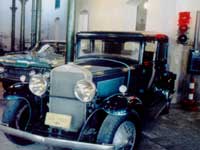 |
||||||||||||||
|
Museo del Ferrocarril Calle Cristina y Arroyo (7) 873-4414 Cuba was the fifth country in the world to open a railway line and so, in 1837. Opened November 19, 2002, the museum is housed in the former Cristina station opened in 1861 with an estimated 13km to Calabazar. Starting point of the first railway line, Cristina was a sad example of the exploitation of Americans engineers who appealed to thousands of black slaves, including some 1,100 succumbed to the introduction of 51km which led Bejucal in the valley of Guines to the capital for the transportation of sugar cane. Closed on Mondays. Admission 2CUC (photo, 5CUC) |
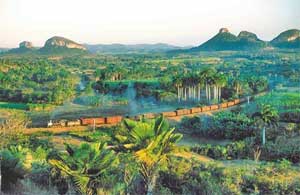 The aficionados will find stupendously fascinating video documents on worldsteam.com. Photo © FarRail Tours |
||||||||||||||
|
Casa Museo Lezama Lima Trocadero No 162, e/Industria y Consulado, La Habana Centro. Tél. 863 4161 mlezama @cubarte.cult.cu Birthplace of José Lezama Lima (1910-1976), poet, director of literary journals including Origins (1944-1956) novelist and a huge influence on the Spanish-American literature of the twentieth century. His masterpiece, Paradiso (1966), was almost ignored in his country and praised abroad. Tuesday-Saturday 9am-17; Sunday 9h-13h. |
|
||||||||||||||
|
Centro Wilfredo Lam San Ignacio y Empredado, Habana Vieja Tél. 861-3419 wlam @cubarte.cult.cu Facing a corner of the cathedral square, the colonial building housed the palace at the time of Peñalver family. Now it bears the name of one of the greatest modern artists of the country. Its rooms on the ground floor, the library and the second used to display the works of contemporary artists known from Cuba and elsewhere, constantly and at Biennales des Arts. Every day from 9h to 17h. |
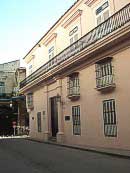 |
||||||||||||||
|
Casa de Asia Mercaderes 111, e/ Obrapía y Obispo. Habana Vieja Tél. (7) 863-9740 Specialist : Lic. Teresita Hernández Corrales Collections from Chinese cultures (Chinese, especially Cantonese origin, are the third largest ethnic group on the island) including paintings and sculptures. Unusual objects reflecting the influence of culture on life in La Habana. Tuesday to Saturday 10h to 18h; Sunday 9am to 13pm. 1cuc |
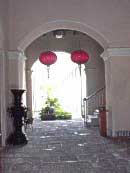 |
||||||||||||||
|
Casa de los Árabes y Aula de Cultura Árabe-Islámica Calle Oficios 16, e/Obispo y Obrapia, La Habana Vieja. Tél. 861-5868 Spécialiste : Lic. Rigoberto Menéndez Paredes It exhibits not only a collection of religious studies and various parts of the Quran in beautifully accented with wooden decorations Arab objects, but it is also the only place of worship for followers of Allah in Cuba. In addition, a collection of weapons from the 18th and 19th centuries, finely worked gold and silver. Attraction of this casa point, "Desert Rose" limestone formation that looks like a flower from the sand. Every day from 9:30 to 18:30. |
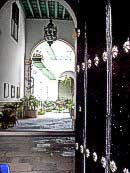 One can also find Union Arabe de Cuba, calle Prado 258-260, e/ Animas y Trocadero, Habana Vieja uac @ip.etecsa.cu |
||||||||||||||
|
Museo de Los Orishas Prado No. 615, e/ Monte y Dragones, La Habana Vieja Tél. 863-5953 asyoruba @cubarte.cult.cu |
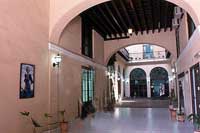 |
||||||||||||||
|
Museo de Arte Universal Calle San Rafael, e/ Zulueta y Monserrate La Habana Vieja musna @cubarte.cult.cu Established under the Museo de Bellas Artes and part of one of its funds, there exhibits a part of a collection of over 7000 prints and drawings including a collection of North American English artists and Germans, among others, and some works by Durer 16th century. |
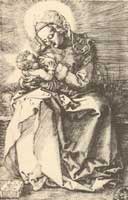 |
||||||||||||||
|
Museo de la Sociedad Espeleologica Avenida 9na No. 8402, à l'angle de la 84 Habana Playa funat @artsoft.cult.cu The famous company, in 2014, celebrated the 75th anniversary of its founding. |
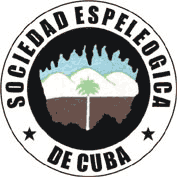 |
||||||||||||||
|
Museo Nacional de la Ceramica Calle Mercaderes # 27 angle Amargura, La Habana Vieja Tél. 861-6130 It used to be in the complex of the Real Fuerza: the treasures of the prestigious Cuban ceramists of the 19th century to today are now found here in the casa Aguilera. The most remarkable pieces are of Wilfredo Lam (1902-1982) and René Portocarrero (1912-1985). This institution sets up the Biennial of Ceramics. Every day from 9h to 17h |
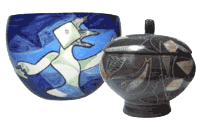 |
||||||||||||||
|
Museo Farmacia Taquechel Calle Obispo No. 155, e/ Mercaderes y San Ignacio La Habana Vieja This was converted from a colonial pharmacy founded in 1898. Restored a century later and partially converted into a museum, there is an impressive collection of original porcelain jars 19th, used in laboratories and pharmacies of the time. The new vocation of the place includes the sale of natural products for therapeutic and homeopathic medicines purposes. |
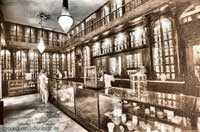 ©Gustavo Rodriguez Rodriguez |
||||||||||||||
|
Museo de la Fortaleza de San Salvador de la Punta Ave. del Puerto y Prado, Habana Vieja (7) 860-3196 Built in 1630 and converted into a museum with the collaboration of the Historian of Havana and the support of UNESCO, one can admire some treasures (the 15th to 19th century) found, inter alia, in the bottom of the sea by divers of CARISUB. Lost annually thereafter hurricanes and pirate attacks Caribbean historical pearls. |
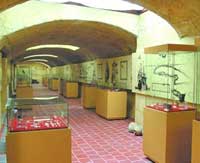 ©cubagrande.com - Eduardo Cabrera |
||||||||||||||
|
Museo de la Orfebrería Calle Obispo No. 113, entre Oficios y Mercaderes La Habana Vieja Tél. 863-9861 Specialist : Lic. Alicia Calzada López plata @cultural.ohch.cu DIn a house built in 1707 by silversmith Gregorio Tabares, exhibitions of jewelry pieces made by Cuban masters and foreign artists from the 17th century to the first half of the 20th. Collection of household utensils, jewelery, weapons, medals and cradles, decorative objects of great value. Every day from 9:30 to 18:30. 1cuc |
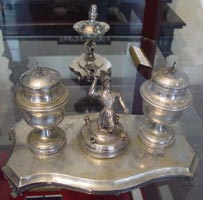 ©solysonmagazine.com - Eduardo Cabrera |
||||||||||||||
|
Museo de Arte Sacro Calle Oficios, entre Amargura y Churruca, in the Basílica Menor y Convento de San Francisco de Asís, La Habana Vieja Tél. (7) 862-9683, 866-9281 Sacred and religious art. All original school plays Havana goldsmith and a varied collection of ancient ceramics; original furniture and collection of missals 18th and 19th centuries.
|
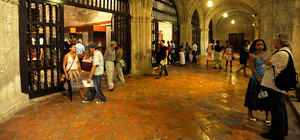 © ohch.cu |
||||||||||||||
|
Museo Antropológico Montané Plaza Ignacio Agramonte, Universidad de la Habana, Vedado Tél. Montane @comub.ub.cu |
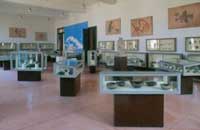 ©sapere.it |
||||||||||||||
|
Museo de Arqueologia Calle Tacón No. 12 e/ O´Reilly y Empedrado La Habana Vieja Tél. 861-4469 arqueologia @cultural.ohch.cu Established in 1987 to support research in the historic center of the capital, there has recovered some of the material found in Habana Vieja. Interpretations, very advanced specializations in the painted wall, roofs and balconades 18th century. It also includes the results of similar research in other parts of Latin America, including the rarest of Valdivia pottery of Ecuador, the oldest people of the continent have made countries. Tuesday to Saturday, 10:15 to 5:45 p.m.; Sunday, 9:15 to 12:45. 1cuc |
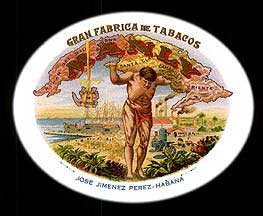 |
||||||||||||||
|
Museo Casa de la Obra Pia Calle Obrapía #158 e/ Mercaderes y San Ignacio Habana Vieja Tél. 861-3097 Specialist : Lic. Janet Quiroga Llanez Collections of furniture and artifacts of the 19th century, especially lingerie and embroidery. Thematic exhibition of the writer Alejo Carpentier, "Retorno has semilla." Restoration workshop painting Caballete Brotherhood and artisans embroidery Belén with its custom work performed and sold locally and for which courses are taught. Tours, specialized conferences, exhibitions and other cultural activities. Tuesday to Saturday, 10:30 to 5:30 p.m.; Sunday, 9:30 to 12:30 |
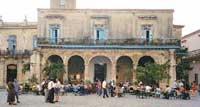 © sogestour |
||||||||||||||
Hurón Azul Museo Calle Paz e/ Constancia y Lindero. Párraga Arroyo Naranjo (7) 57-8246 |
|||||||||||||||
Casa Museo Alejandro de Humboldt Calle de los Oficios No. 254, esq. a Muralla, Habana Vieja (7) 8639850 The Alejandro Humboldt House, Office of the City Historian of Havana, was opened as a house museum October 31, 1997. |
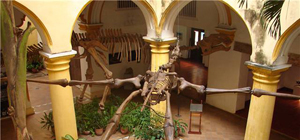 © ohch.cu |
||||||||||||||
Casa de Benito Juarez Obrapía No. 116 e/ Mercaderes y Oficios. Habana Vieja Tel. (7) 861-8166 |
|||||||||||||||
Museo de la Educacion Obispo esq. a Mercaderes Habana Vieja (7) 861-5468 |
|||||||||||||||
Museo Nacional de la Música Calle Capdevila No. 1 e/ Habana y Aguiar, Habana Vieja (537) 861-9846 |
|||||||||||||||
Museo de Naipes (Playing Cards) Calle Muralla, esq. Inquisidor, Plaza Vieja Habana Vieja Tel. (7) 8601534 In the house which belonged to Prado Ameno, the museum is located on the ground floor of the oldest building in the Old Town Square, dating from the seventeenth century; originally belonged to the Arrate family in the second half of XVIII, homesteading remarkable habanero historian José Martín Félix Arrate. |
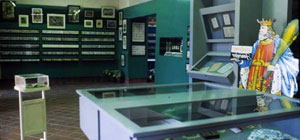 © ohch.cu |
||||||||||||||
Palacio de Gobierno Calle Oficios No. 211 e/ Muralla y Callejón de Churruca, Habana Vieja (7) 863-4352 |
|||||||||||||||
Museo del Tabaco Calle Mercaderes No. 120 e/ Obrapía y Obispo, Habana Vieja (7) 861-5795 Founded on February 26, 1993, the Cigar (Tabaco) Museum is located in an eighteenth century building which belonged to the family of Bartholomew Luque. Later it passed to different owners to be operated by the comprehensive restoration process that takes place in the historic center of Havana. |
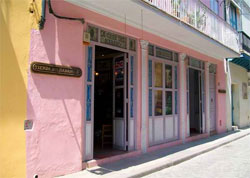 |
||||||||||||||
Museo de Medicina Tropical Carlos J. Finlay Autop. N. del Mediodía, Km 16 e/ Autop. Este-Oeste y Ctera. Central, Miramar/Playa (7) 202-0430 Born Dec. 3, 1833, Puerto Príncipe, Cuba—died Aug. 20, 1915, Havana), Cuban epidemiologist who discovered that yellow fever is transmitted from infected to healthy humans by a mosquito. Although he published experimental evidence of this discovery in 1886, his ideas were ignored for 20 years. |
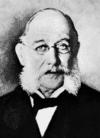 |
||||||||||||||
Museo Nacional del Ministerio del Interior Calle 14, e/ 3ra. y 5ta., Miramar Playa (7) 202-1240 "This is such a non publicised treasure. We passed it 4 times before realising that there was an entrance and it was a Museum. It was cram packed with information and artefacts from the revolution. Some were very grizzly indeed especially the testicle remover! Legs crossed instantly and they were in a glass cabinet!! If you saw everything in this museum it would take you at least 6 hours as there is so much to see. 67RichardD on TA |
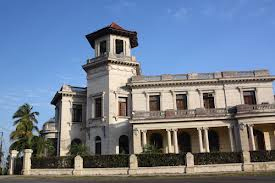 |
||||||||||||||
Museo Municipal Máximo Gómez Ave. Salvador Allende y Luaces, Quinta de Los Molinos, Plaza de la Revolución, Vedado (7) 879-8850 |
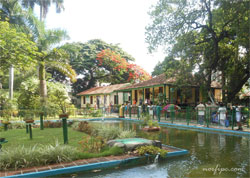 |
||||||||||||||
Museo Postal Ave. Rancho Boyeros, e/ 19 de Mayo y 20 de Mayo Plaza de la Revolución, Vedado (7) 881-5551 |
|||||||||||||||
Museo Municipal Eduardo Gómez Luaces Calle Martí No. 158 e/ Facciolo y La Piedra, in Regla, across the bay - on your way to see El Cristo, why not ? (7) 897-6989 Four rooms of history illustrate the origin of the Sanctuary of the Virgin of Regla, the evolution of the town between the XVII and XVIII centuries, as well as the economic activity in the Havana port during the XIX century and the contribution of European, African and Spanish immigrants. There are also pieces that bear witness to the visits of José Martí to the town of Regla, the participation of reglanos in the War of Independence of 1895, the struggle against the dictatorship of Fulgencio Batista, and the triumph of the Cuban Revolution. |
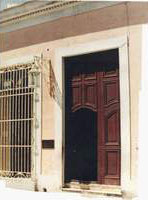 |
||||||||||||||
Casa Victor Hugo Calle O’Reilly# 311, entre Habana y Aguiar, near Plaza de Armas, Habana Vieja In the casa de Miguel Ayala Poey (1754), there are now not as a museum but as a cultural center highlighting the links between France Cuba. Library, conference center, exhibition, auditorium, learning French; hexagonal original objects found by archaeologists and Havana, to form, the death mask of the great defender of Cuba. " "Several years of gestation, 24 months of painstaking work and the opening of a center for the dissemination of French culture, a meeting place for exchange, dialogue a new area of cooperation.", according to French patron Roger Grevoul. |
 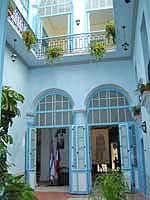 |
||||||||||||||
| Casa del Benemérito de las Américas Benito Juárez Obrapía 116 e/ Mercaderes y Oficios, La Habana Vieja Tel. (7) 861 8166 Located in a building from the late eighteenth century in the historic center of Havana City, the House of the Father of the Americas since 1988 Benito Juarez is the main center for the dissemination of Mexican culture in Cuba. In its halls and galleries visitors will approach the history, art, traditions and customs of Mexico. |
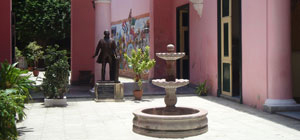 © ohch.cu |
||||||||||||||
| Museo de la Pintura Mural Obispo 117-119 e/ Mercaderes y Oficios, La Habana Vieja Tel: 864 2354 Since its opening on November 16, 2006, the Museum of Mural Painting, part of the Cultural Heritage of the Office of the City Historian of Havana (OHCH), has been developing its cultural project rescue, conservation and dissemination of pictorial and archaeological heritage present in Cuban colonial buildings. |
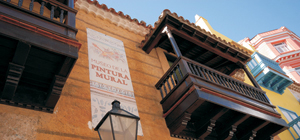 © ohch.cu |
||||||||||||||
| Casa de El Vedado Calle 23, entre D y E, El Vedado Tel. (7) 835 3398 Located outside the boundaries of the Historic Center, the House of El Vedado, built in 1921, played the architectural codes of the European eclecticism of the late eighteenth century, reason differs from typical architectural ensemble of the city of Havana that time. |
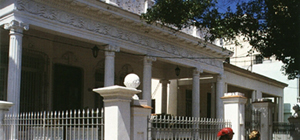 © ohch.cu |
||||||||||||||
| Museo Castillo de La Real Fuerza O'Reilly 2, e/Avenida del Puerto y Tacón, La Habana Vieja Tel. (7) 864 4490 Opened on October 6, 2008, after an intensive restoration work by the Office of the Historian of the City and other institutions, the museum of the Royal Force, is located in one of the most emblematic buildings of the city. Built between 1558-1577 the fort itself is the main exponent of this institution. |
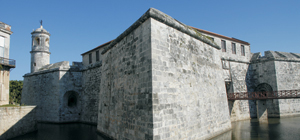 © ohch.cu |
||||||||||||||
| Museo Castillo de San Salvador de La Punta Avenida del Puerto y Prado, La Habana Vieja Tel: 860 3196 Construction of San Salvador de La Punta, a key defensive fortifications within the system on a continental scale, lasted about forty years (1590-1630) and his position, twinned with the Castillo de los Tres Reyes del Morro on both sides input the waterfront, creating cross fire systems defending the entrance of the harbor. |
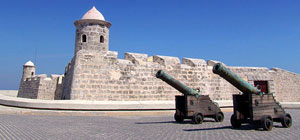 © ohch.cu |
||||||||||||||
| Sala de los Bomberos Mercaderes esq. a Lamparilla, La Habana Vieja Tel. (7) 861 8080 It was Saturday night May 17, 1890 around 10:30 and serene performing the round to reach near Merchants and Lamparilla, he noticed that a fire had broken out and sounded the alarm: Fire at Isasi Hardware! Immediately attended Municipal Fire and Trade, without waste of courage and selflessness, tried to extinguish the fire with the help of neighbors, police and bystanders. |
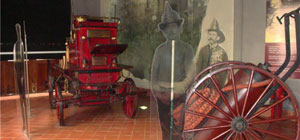 © ohch.cu |
||||||||||||||


















